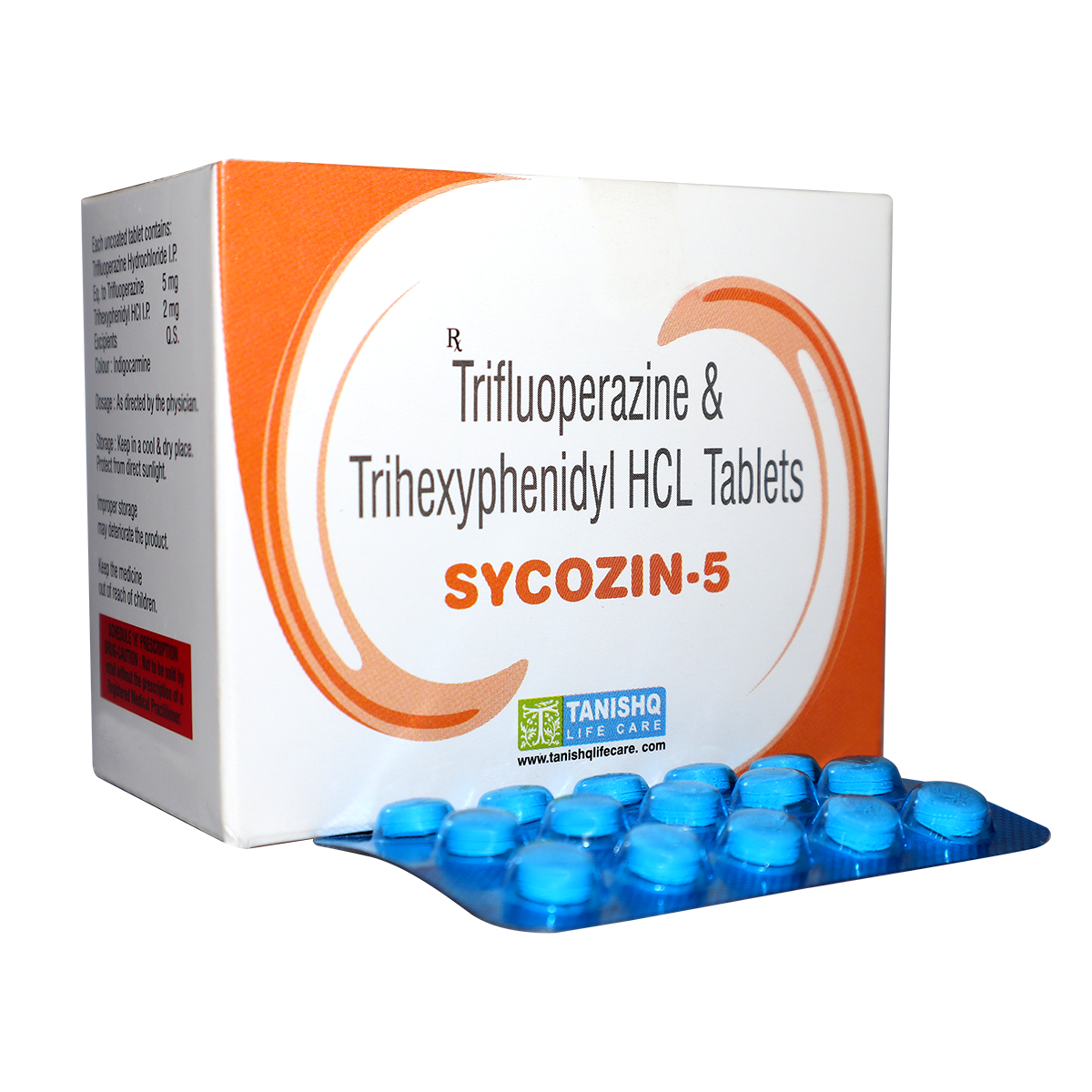
Trifluoperazine 5mg, Trihexyphenidyl 2 mg Tablet
1. Trifluoperazine 5mg Tablet
Trifluoperazine is a typical (first-generation) antipsychotic belonging to the phenothiazine class. It works by blocking dopamine receptors in the brain to help treat various psychiatric conditions.2. Trihexyphenidyl 2mg Tablet
Trihexyphenidyl is an anticholinergic medication primarily used to treat Parkinson’s disease and drug-induced extrapyramidal symptoms, including those caused by antipsychotics.- Recommended Usage
1. Trifluoperazine 5mg Tablet
Indications
- Schizophrenia (acute and chronic)
- Anxiety (short-term management, especially when associated with severe agitation)
- Severe nausea and vomiting (as an antiemetic)
Dosage and Administration
Schizophrenia: Start at 2-5 mg/day, increasing gradually to 10-15 mg/day depending on the response.
Anxiety: Start with 1-2 mg/day, increasing gradually as needed. Maximum dose: 6 mg/day.
Typically administered 1-3 times daily.
Can be taken with or without food.
Elderly or patients with liver/renal dysfunction: Start with lower doses and adjust cautiously.
Precautions
Extrapyramidal symptoms: Risk of tremors, rigidity, and tardive dyskinesia with prolonged use.
Sedation: Can cause drowsiness or sedation, especially in the beginning.
Neuroleptic malignant syndrome (NMS): A rare but serious condition, presenting with hyperpyrexia, muscle rigidity, altered mental status, and autonomic instability.
Cardiovascular effects: Monitor for orthostatic hypotension and QT prolongation.
Avoid abrupt withdrawal to prevent rebound symptoms.
Use caution in elderly patients (especially those with dementia-related psychosis) due to increased risk of death.
2. Trihexyphenidyl Hydrochloride 2mg
Indications
- Parkinson's disease (to control tremors and rigidity)
- Extrapyramidal symptoms caused by antipsychotics (e.g., Parkinsonism, dystonia, tardive dyskinesia)
Dosage and Administration:
Parkinson's disease: Start with 1-2 mg/day, gradually increasing to 6-10 mg/day as tolerated.
Extrapyramidal symptoms: 1-2 mg/day, increasing gradually based on symptom severity.
Usually taken 1-3 times daily.
Can be taken with or without food.
Elderly or patients with liver/renal impairment: Dose may need adjustment and monitoring for anticholinergic side effects.
Precautions:
Anticholinergic side effects: Dry mouth, blurred vision, constipation, urinary retention, and cognitive disturbances.
Glaucoma: Contraindicated in patients with narrow-angle glaucoma.
Elderly: Higher sensitivity to side effects such as confusion, hallucinations, and sedation.
Urinary retention or BPH: Caution due to anticholinergic effects.
Use cautiously in patients with cognitive disorders or dementia.
